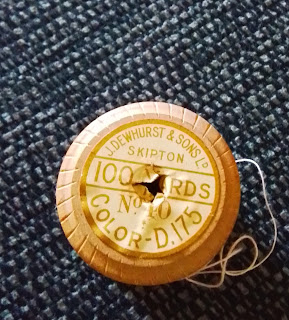The Marvellous Mr Mercer
Have you ever read a Sylko label and wondered what on earth the mercerised cotton thread bit is all about? I only recently discovered that the mercerisation process was named after an actual person - John Mercer. On delving more into his life, I've found that there is much to be admired in Mr Mercer.
John Mercer was born around 1791 in Great Harwood, Lancashire. He began working as a weaver at a young age, so obviously he was an ordinary boy and not from a wealthy background. But it seems that he showed great promise, as a teenager he managed to obtain an apprenticeship to a printer in Openshaw. He met with a temporary setback, when the apprenticeship was cancelled due to trade depression. He went back to the loom, but he had an enquiring mind, and he was interested in the dyeing process. He began to experiment...
His early discoveries in the dyeing process led to him obtaining a job as an experimental chemist at the age of 25, and in just 8 years he was a partner at the firm. He spent some time investigating the effects of alkalis on vegetable fibres, and one day he took especial notice of the effect of caustic soda on cotton fibres. On following this up, he developed the mercerisation process, and patented it in 1850. He was offered the astonishing sum of £40,000 for this patent by a French company, which he turned down.
So what exactly is mercerisation? Here's an extract from The Factory Times newspaper, 24th June 1910:
"In mercerising a durable lustre is imparted to cotton yarns which makes them closely resemble silk...it increases strength and beauty..."
"John Mercer discovered that cotton fibres soaked in a solution of caustic soda then became stronger and fuller, with increased powers of receiving colour and making the colours more permanent. After mercerisation the brightness and lustre of cotton are improved because of the smoother surface of yarn, reflecting the light much better to the eye somewhat on the same principle that a smooth sheet of water may give reflection."
John Mercer was now wealthy and admired. He became an FRS and a member of the Manchester Philosophical Society. He was friends with Faraday and Lord Playfair, both visiting him at his home at Clayton-le-Moors. He died in 1866, aged 76. In 1903, a clock tower memorial was erected in Great Harwood. His home and garden was left to the community on the death of his last surviving daughter in 1916. This is now Mercer Park - see the screenshot of a leaflet below for a photo of the man himself.
 |
| Google Streetview image of the memorial clock tower |





Comments
Post a Comment